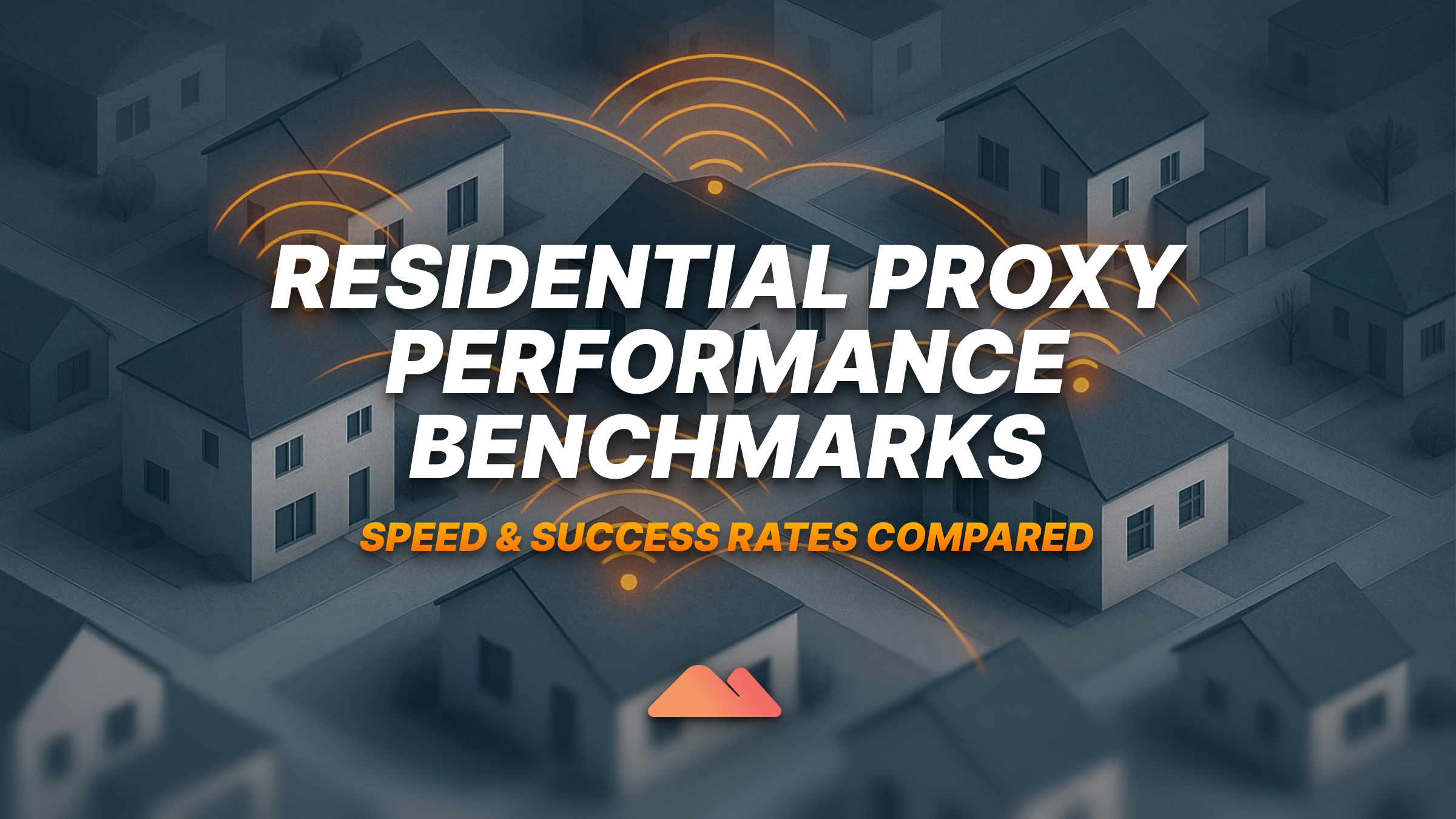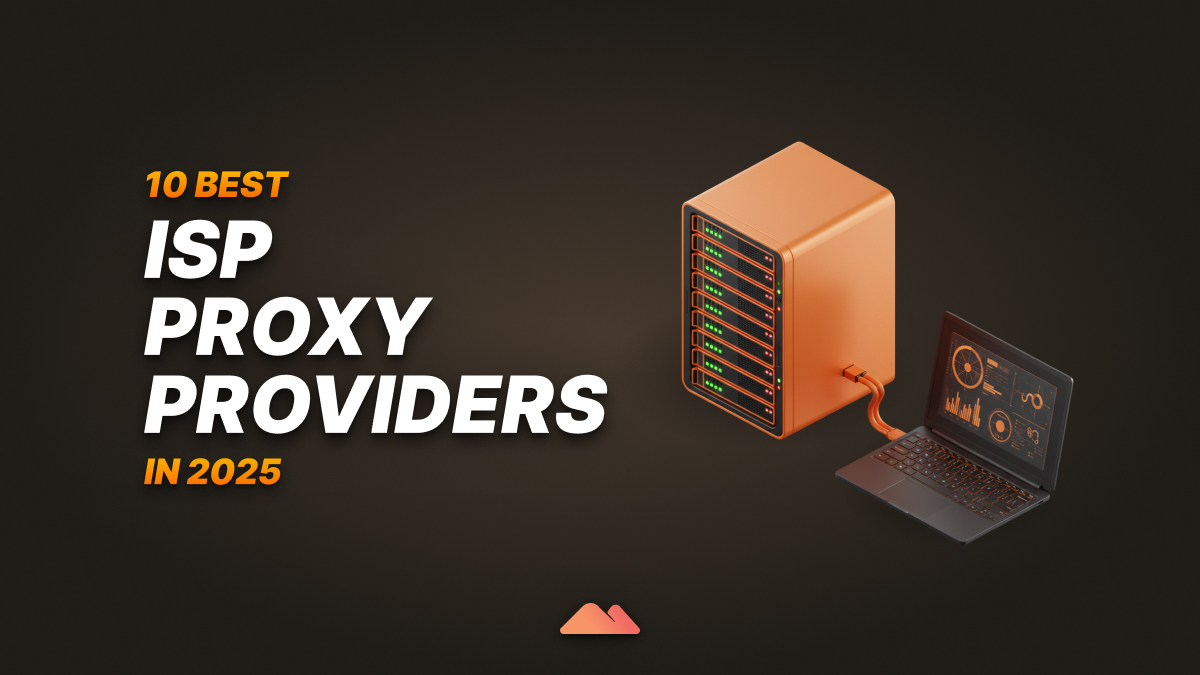Al evaluar los servicios de representación residencial, comprender los puntos de referencia de desempeño es crucial para tomar decisiones informadas. A diferencia de los proxies de centros de datos que ofrecen velocidades predecibles, proxies residenciales presentan desafíos únicos debido a su dependencia de los dispositivos de usuario reales y a las condiciones de red variables. Esta guía completa examina las principales métricas de rendimiento que debe tener en cuenta y proporciona puntos de referencia de todo el sector para ayudar a establecer expectativas realistas.
Puntos de referencia esenciales para la evaluación de poderes residenciales
Métricas de velocidad
Response time (latencia): El tiempo de respuesta mide la rapidez con la que un servidor proxy responde a sus solicitudes. En el caso de los proxies residenciales, los tiempos de respuesta típicos oscilan entre 200 y 2000 ms, significativamente más que los de los proxies de centros de datos debido al enrutamiento adicional a través de las redes residenciales.
Download speed: Esta métrica indica la rapidez con la que se pueden recuperar los datos a través de la conexión proxy. Los promedios del sector para los proxies residenciales suelen oscilar entre 10 y 50 Mbps, aunque esto varía considerablemente según la ubicación y las condiciones de la red.
Charge speed: Menos crítico para la mayoría de los casos de uso, pero importante para las aplicaciones que requieren el envío de datos. Los proxies residenciales suelen alcanzar velocidades de carga de 5 a 25 Mbps de media.
Métricas de confiabilidad
Tasa de éxito: El porcentaje de solicitudes que se completan correctamente sin errores. Quality residenciales proxy services Por lo general, mantienen tasas de éxito entre el 95 y el 99%, y los proveedores premium alcanzan el límite superior de este rango.
Tiempo de actividad: Mide el porcentaje de tiempo que el servicio de proxy permanece accesible. Los estándares del sector esperan un tiempo de actividad del 99,5% o más, y los principales proveedores suelen alcanzar una disponibilidad del 99,9%.
Connection stability: Evalúe la consistencia con la condición de que las conexiones permanezcan activas durante las sesiones prolongadas. Los proxies residenciales de alta calidad mantienen conexiones estables durante un promedio de 10 a 30 minutos antes de la rotación.
Indicadores geográficos de resultados
Cobertura global: El número de países y ciudades en los que están disponibles las direcciones IP. Los servicios integrales suelen ofrecer cobertura en más de 100 países with objetivos a nivel de ciudad en los principales mercados.
IP group size: El número total de direcciones IP únicas disponibles. Los grupos más grandes (millones de direcciones IP) suelen ofrecer un mejor rendimiento y tasas de detección más bajas.
Frecuencia de rotación: La frecuencia con la que cambian las direcciones IP, ya sea automáticamente o bajo demanda. La rotación óptima equilibra la persistencia de la sesión con los requisitos de anonimato.
Promedios de rendimiento en toda la industria
Puntos de velocidad por región
Norteamérica
- Tiempo medio de respuesta: 300-800 ms
- Velocidades de descarga típicas: 20-45 Mbps
- Velocidades de carga: 8-20 Mbps
Europa
- Tiempo medio de respuesta: 250-700 ms
- Velocidades de descarga típicas: 15-40 Mbps
- Velocidades de carga: 6-18 Mbps
Asia-Pacífico
- Tiempo medio de respuesta: 400-1200 ms
- Velocidades de descarga típicas: 12-35 Mbps
- Velocidades de carga: 5-15 Mbps
Otras regiones
- Tiempo medio de respuesta: 500-1500 ms
- Velocidades de descarga típicas: 8-25 Mbps
- Velocidades de carga: 3-12 Mbps
Éxito rate standards
Web Raspado Apps
- Nivel estándar: tasa de éxito del 92 al 96%
- Prima Level: tasa de éxito del 96 al 99%
- Nivel empresarial: tasa de éxito del 98 al 99,5%
Gestión social
- Nivel estándar: Hit rate of 90 to 95%
- Prima Level: tasa de éxito del 95 al 98%
- Nivel empresarial: tasa de éxito del 97 al 99%
Comercio electrónico y monitoreo de precios
- Nivel estándar: tasa de éxito del 93 al 97%
- Prima Level: tasa de éxito del 97 al 99%
- Nivel empresarial: tasa de éxito del 98 al 99,5%
Factores clave que influyen en las puntuaciones de referencia
Calidad de la infraestructura de red
La infraestructura de red subyacente tiene un impacto significativo en el rendimiento. Los proveedores con conexiones troncales sólidas y servidores ubicados estratégicamente suelen obtener mejores puntajes de referencia en todos los indicadores.
Distribución geográfica
Los servicios con grupos de IP bien distribuidos en varios continentes suelen ofrecer un rendimiento más uniforme. Los grupos de IP concentrados en regiones específicas pueden mostrar un rendimiento local excelente, pero unos resultados internacionales deficientes.
Gestión de las tasas de tráfico
La forma en que los proveedores gestionan a los usuarios simultáneos afecta al rendimiento individual. Los servicios con un equilibrio de carga efectivo mantienen velocidades constantes incluso durante los períodos de mayor uso.
Calidad y diversidad de los dispositivos
La calidad y la diversidad de los dispositivos de la red residencial tienen un impacto directo en el rendimiento. Las redes que comprenden principalmente conexiones de alta velocidad con dispositivos modernos suelen superar a las que tienen terminales más antiguos o más lentos.
Tasas de detección y bloqueo
Las tasas de detección más bajas suelen correlacionarse con un mejor rendimiento general, ya que las solicitudes bloqueadas no contribuyen a los cálculos de la tasa de éxito. Los proveedores con medidas antidetección sofisticadas suelen obtener puntuaciones de referencia más altas.
Cómo interpretar los puntos de referencia de forma eficaz
Comprensión del contexto
Los resultados comparativos siempre deben considerarse dentro de su contexto. Un tiempo de respuesta de 500 ms puede ser excelente para ciertas aplicaciones, pero inadecuado para casos de uso en tiempo real. Del mismo modo, una tasa de éxito del 95% podría ser perfectamente aceptable para algunas tareas de extracción, pero insuficiente para las operaciones empresariales críticas.
Comparar manzanas con manzanas
Al evaluar los puntos de referencia, asegúrese de comparar niveles de servicio y casos de uso similares. Los servicios de representación residencial premium superan naturalmente a las ofertas básicas, y los puntos de referencia deben reflejar estas distinciones.
Geographical Relevancia
Presta especial atención a los puntos de referencia para las regiones geográficas de destino. Un proveedor puede sobresalir en Actuación norteamericana con un rendimiento inferior en los mercados de Asia y el Pacífico, o viceversa.
Rendimiento sostenido frente a rendimiento máximo
Tenga en cuenta si los datos de referencia representan un rendimiento sostenido o condiciones óptimas. Es posible que algunos proveedores muestren excelentes puntos de referencia a corto plazo, pero experimenten un deterioro debido a una carga continua.
Pruebas en el mundo real
Si bien los puntos de referencia de la industria proporcionan puntos de referencia valiosos, realizar sus pruebas con cargas de trabajo representativas, ofrece la evaluación del rendimiento más precisa para sus requisitos específicos.
Estrategias de optimización del rendimiento
Selección de puntos finales óptimos
Elija puntos finales proxy cercanos geográficamente a sus destinos de destino para minimizar la latencia. Para las operaciones globales, piense en los proveedores que ofrecen un enrutamiento inteligente que selecciona automáticamente la mejor ruta.
Administración de sesiones
Implemente estrategias de administración de sesiones adecuadas que equilibren el rendimiento con los requisitos de anonimato. Las sesiones más largas reducen la sobrecarga de conexión, pero pueden aumentar el riesgo de detección.
Optimización de solicitudes
Optimice sus patrones de solicitud para que funcionen de manera eficiente con las características de los proxies residenciales. Esto incluye implementar una lógica de reintento adecuada y gestionar las variaciones esperadas en los tiempos de respuesta.
Monitorización y alertas
Establezca una supervisión integral para realizar un seguimiento continuo de las métricas de rendimiento. Configure alertas para detectar desviaciones significativas con respecto a los puntos de referencia esperados para identificar y abordar rápidamente los problemas.
Tendencias de la industria y perspectivas futuras
Mejora de la infraestructura
La industria de los proxies residenciales continúa invirtiendo en mejoras de infraestructura, y las velocidades promedio aumentan año tras año a medida que las conexiones residenciales a Internet se vuelven más rápidas y confiables.
Resistencia de detección mejorada
Los proveedores están desarrollando técnicas más sofisticadas para mantener altas tasas de éxito frente a sistemas de detección cada vez más avanzados, lo que lleva a mejoras graduales en las puntuaciones de referencia.
Expansión geográfica
La expansión de la cobertura global está mejorando la consistencia de los índices de referencia en todas las regiones, y los mercados que antes estaban desatendidos muestran importantes mejoras de rendimiento.
Integración tecnológica
La integración de las tecnologías de aprendizaje automático e inteligencia artificial permite un enrutamiento del tráfico y un equilibrio de carga más inteligentes, lo que contribuye a mejorar las métricas de rendimiento general.
Conclusión
Comprender los puntos de referencia del desempeño de los representantes residenciales es esencial para tomar decisiones informadas sobre los servicios y establecer expectativas realistas. Si bien los promedios del sector proporcionan puntos de referencia valiosos, recuerde que el rendimiento real depende de numerosos factores, incluidos su caso de uso específico, los destinos a los que se dirige y los requisitos operativos.
La clave para una utilización exitosa del proxy radica en equilibrar los requisitos de rendimiento con otros factores, como la cobertura geográfica, la resistencia a la detección y las consideraciones de costo. Al comprender estos puntos de referencia y sus implicaciones, puede tomar decisiones más informadas y optimizar la implementación del proxy para lograr la máxima eficacia.

Soy el cofundador y director ejecutivo de Massive. Además de trabajar en nuevas empresas, soy músico, atleta, mentor, anfitrión de eventos y voluntario.
Opiniones de clientes
Pregunta frecuente
¿Qué se considera una buena tasa de éxito para los proxies residenciales?
+
Por lo general, se considera que una tasa de éxito del 95% o superior es buena para los proxies residenciales, y los servicios premium alcanzan el 97-99%. El umbral aceptable depende del caso de uso: el raspado web suele tolerar entre un 92 y un 95%, mientras que las aplicaciones empresariales críticas suelen requerir un 98% o más
¿Por qué las velocidades de los proxies residenciales son más lentas que las de los proxies de centros de datos?
+
Los proxies residenciales dirigen el tráfico a través de dispositivos de usuarios reales en redes residenciales, que tienen velocidades variables y saltos de red adicionales. Esto crea una latencia inherente en comparación con los proxies de centros de datos que utilizan conexiones de servidor dedicadas de alta velocidad. Se esperan tiempos de respuesta de 200 a 2000 ms frente a los 10 a 100 ms de los proxies de centros de datos.
¿Cómo sé si los datos de referencia son fiables?
+
Busque puntos de referencia que especifiquen la metodología de las pruebas, los tamaños de las muestras, los períodos de tiempo y el alcance geográfico. Los puntos de referencia confiables deben incluir múltiples métricas (velocidad, tasa de éxito, tiempo de actividad) probadas en diferentes casos de uso y períodos de tiempo. Tenga cuidado con los puntos de referencia que solo muestran un rendimiento máximo sin resultados de pruebas sostenidos.
¿Cuáles son los factores que más afectan el desempeño de los representantes residenciales?
+
La calidad de la infraestructura de red es la que tiene el mayor impacto, seguida de la distribución geográfica de los grupos de IP y la administración de la carga de tráfico. La calidad de los dispositivos de la red residencial, las tasas de detección por parte de los sitios web de destino y la optimización del enrutamiento por parte del proveedor también influyen significativamente en los puntos de referencia de rendimiento.
¿Debo priorizar la velocidad o la tasa de éxito al elegir un proveedor?
+
Esto depende de sus requisitos específicos. Para las aplicaciones en las que el tiempo es urgente, como la recopilación de datos en tiempo real, la velocidad es la prioridad. En las operaciones de raspado a gran escala, la tasa de éxito suele ser más importante, ya que las solicitudes fallidas desperdician recursos. La mayoría de los usuarios se benefician de un rendimiento equilibrado en ambas métricas, en lugar de optimizar solo una.









